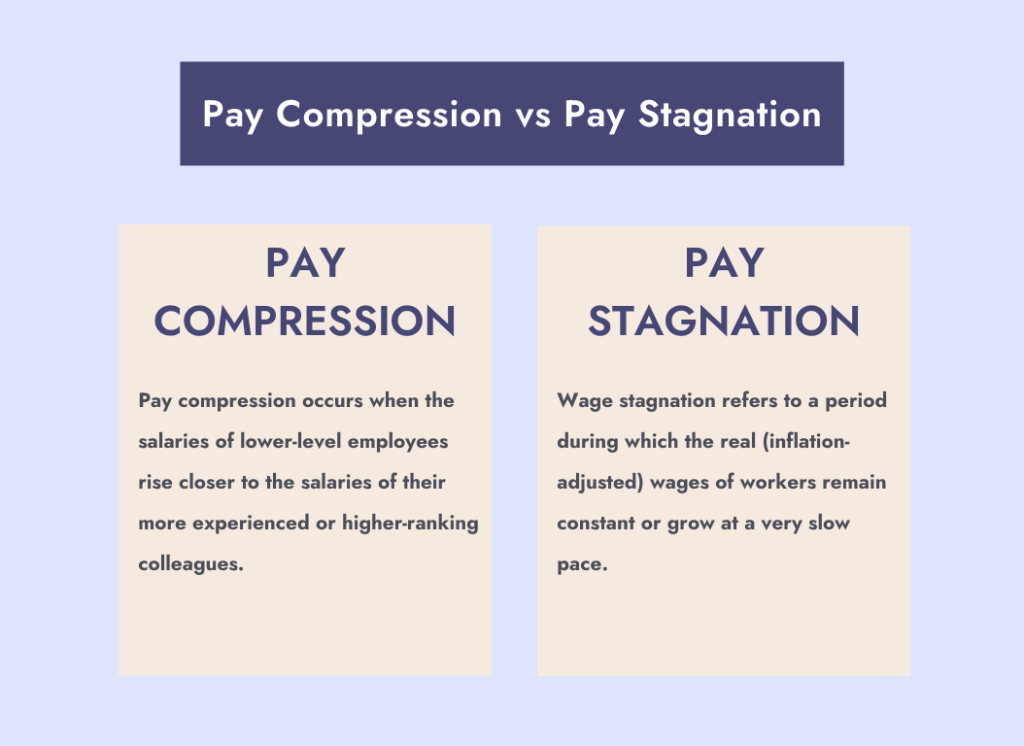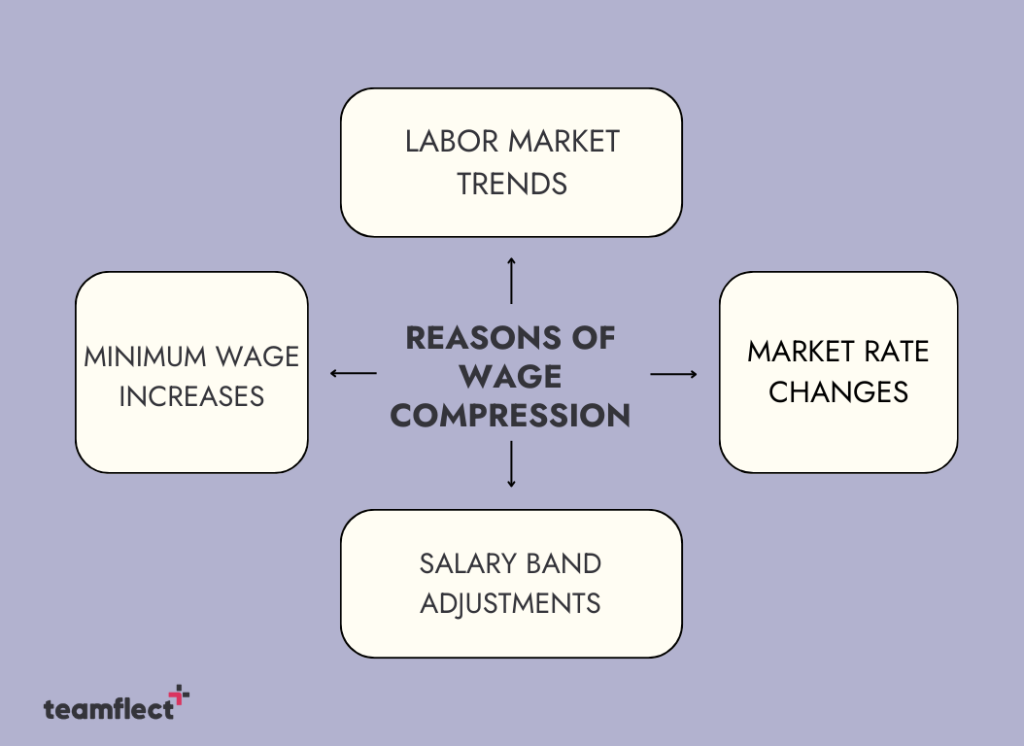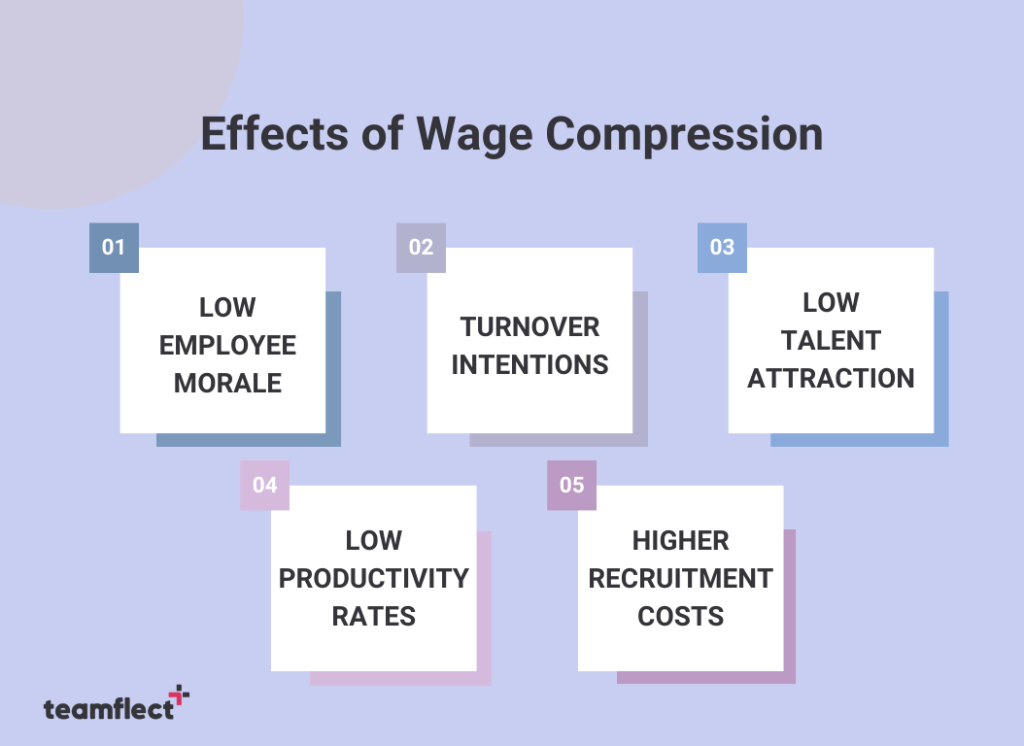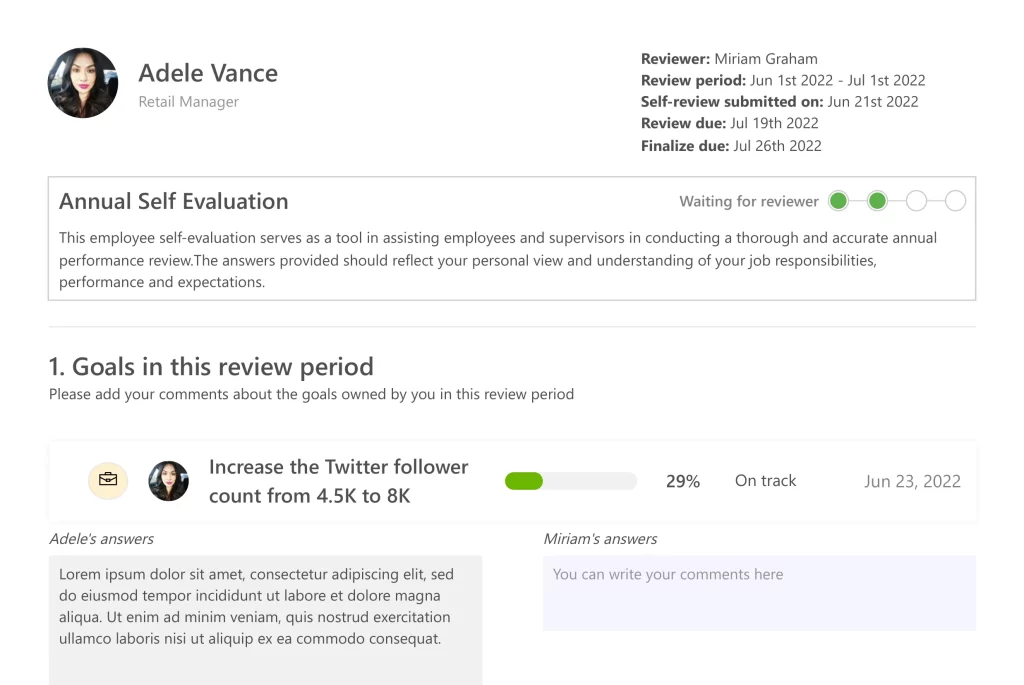Pay compression just might be one of the largest yet most heavily ignored factors in why employee engagement action plans and initiatives fail.
In the discussion of employee engagement, everybody wants to talk about teambuilding activities, employee praise, or how the organization is a family.
What is everybody leaving out?
Cold.
Hard.
Cash.
In an era where employee loyalty as a concept is a thing of the past, and employee retention is one of the most crucial HR trends around, the issue of wage compression is one that can’t be ignored.
Retaining key talent and preventing them from burning out is already hard enough on its own.
When those people find out that their tenure is not being reflected in their paychecks?
It becomes downright impossible.
So let’s start having those difficult conversations about wage compression.
Table of Contents
What Is Pay Compression?
Wage compression, a term increasingly encountered in discussions about workplace dynamics and compensation strategies, refers to the narrowing of the pay gap between employees at different levels within an organization.
This phenomenon can affect workers from entry-level positions to those in senior roles and has significant implications for both employee satisfaction and organizational health.
Definition and Explanation
The simplest definition of pay compression or wage compression is as follows. Pay compression occurs when the salaries of lower-level employees rise closer to the salaries of their more experienced or higher-ranking colleagues.
Wage compression can result from various factors, including but not limited to policy changes, market pressures, or internal pay adjustments.
Unlike wage stagnation, where salaries remain flat over time, wage compression specifically deals with the relative differences in pay shrinking across different levels or roles within a company.
Pay Compression vs Pay Stagnation

The distinction between wage compression and wage stagnation is crucial. While stagnation speaks to a lack of overall salary growth, compression focuses on the internal salary structure becoming more condensed.
Pay compression can lead to a sense of unfairness among long-term employees, who may feel their experience and tenure are undervalued.
Why Does Pay Compression Occur?

Several key factors contribute to wage compression, each interplaying with the others to shape the compensation landscape within organizations:
- Minimum Wage Increases: Legislative increases to minimum wage can elevate entry-level salaries, compressing the wage gap with more experienced positions that don’t see a corresponding wage increase.
- Salary Band Adjustments: Companies may adjust their salary bands to remain competitive in attracting talent. However, if these adjustments are not uniformly applied across all levels, it can lead to compression.
- Market Rate Changes: As the demand for certain skills fluctuates, organizations may offer higher starting salaries to new hires, inadvertently compressing the wage gap with existing employees.
- Economic Policies and Labor Market Trends: Broader economic conditions and labor market trends can also influence wage compression. For example, during times of labor shortages, companies might raise entry-level wages to attract workers, which can compress wages if not managed carefully across the board.
Wage compression is a complex issue that, left unaddressed, can lead to dissatisfaction and disengagement among employees.
By recognizing the factors that contribute to this phenomenon, employers can take proactive steps to ensure a fair and equitable compensation structure that recognizes the value and contributions of all employees.
What Are The Impacts Of Wage Compensation?

Pay compression, while often discussed in terms of its economic and policy implications, carries profound effects on both employees and employers, shaping workplace dynamics, morale, and overall organizational performance.
Understanding these impacts is crucial for stakeholders at all levels to address and mitigate potential negative consequences effectively.
Effects of Pay Compression On Employees
The effects of wage compression on employees are multifaceted, influencing not only their financial well-being but also their job satisfaction and career trajectories.
- Morale and Motivation: When wage differences between new hires and more experienced employees narrow, it can lead to feelings of undervaluation among veteran staff. These employees may perceive their years of service and accumulated expertise as being inadequately rewarded, which can erode job satisfaction and motivation.
- Turnover Intentions: Reduced morale can increase employee turnover intentions among seasoned employees, who might seek opportunities elsewhere that they believe will more fairly compensate for their experience and contributions.
Effects of Pay Compression On Employers
The repercussions of pay compression extend to employers, affecting their ability to attract, retain, and cultivate a motivated workforce.
- Talent Attraction and Retention: Employers facing wage compression issues may find it increasingly challenging to attract and retain top talent. Prospective employees are often aware of market rates and may shy away from offers from companies known for compressed wage structures.
- Productivity and Company Performance: Employee dissatisfaction stemming from wage compression can lead to declines in productivity. Motivation is a key driver of employee performance, and when workers feel undervalued, their engagement and output can suffer
- Recruitment Costs and Administrative Burden: High turnover rates driven by dissatisfaction with wage compression lead to increased recruitment costs and administrative burdens. The cycle of losing dissatisfied employees and having to recruit and train their replacements can be both costly and time-consuming, diverting resources from other strategic investments and growth opportunities.
Wage compression presents a complex challenge that requires thoughtful strategies to address. Its impacts on employee morale and turnover can have cascading effects on organizational health, affecting everything from productivity to the bottom line.
How To Prevent Pay Compression?
Wage compression is a challenge that can undermine employee morale, productivity, and overall organizational health.
1. Implement Transparent Compensation Structures
Develop and communicate clear compensation structures that include salary bands for all positions. Transparency helps employees understand their pay relative to their experience, role, and the market, reducing perceptions of unfairness.
2. Regular Performance Reviews and Wage Adjustments
Conduct annual or bi-annual reviews of salary bands and adjust them based on market trends. This helps ensure that the organization remains competitive in attracting talent while managing internal pay equity.
Conducting Performance Reviews Objectively & Efficiently
Performance appraisals related to wage adjustments have little to no room for error of any kind in them. That is why manual performance review templates just won’t do.
You can conduct accurate, data-oriented, and streamlined performance appraisals inside Microsoft Teams or Outlook using Teamflect’s performance review software.

Integrate key performance metrics and data into your performance reviews such as:
- Goal Completion Rates
- 360-Feedback Results
- Self Review
- Recognition Received
- 9-Box Grid Analysis
This way, you can ensure that any decisions you make to remedy pay compression are completely objective and irrefutable.



